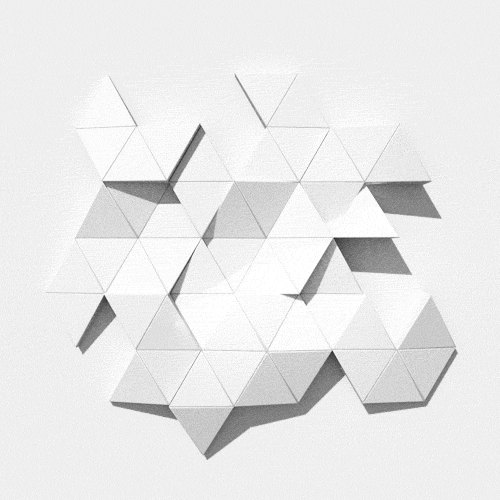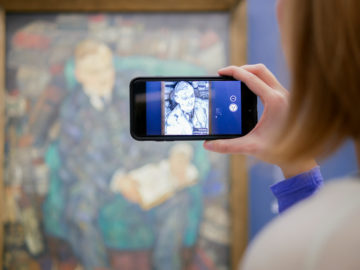Tangible User Interfaces
Physical Surface Transformation
Color and Sound Visualization
A tangible user interface is a tangible interface that allows user to interact with the machine trough physical objects.
Over the last decades, a new dimension of human computer communications has developed. Many amateur and semi-professional projects started. Due to open source tracking technologies and the required infrastructure is now accessible to almost everyone. A standard PC, webcam, and some handicraft work allows individuals to set up tangible systems with a minimal programming and material effort. Furthermore it finds its analogy in natural user interfaces. These fit the interests and expectations of users and design the interaction exciting and directly. This opens doors to new ways of perceiving human-computer interaction and allows for new forms of creativity for the public to experiment with.
The input is done directly with hands, the voice, or with the whole body. Tangible User Interfaces are one characterization of natural user interfaces. Your focus is literally on the “grasping” of digital content. These give them a material shape. These physical objects are called tangibles.
The real everyday world is diverse and the interaction with objects refers to all human senses. A natural interaction with tangible user interfaces is based on actions that the human being from dealing with non-technological aspects of its real environment.
It is difficult to keep track and overlook the rapidly growing number of all these systems and tools, but while many of them seem only to utilize the available technologies and are limited to initial experiments and tests with some basic ideas or just reproduce existing systems, a few of them open out into new interfaces and interactions and are deployed in public space or embedded in art installations.
Todays Technology in Tangible Interfaces
Tangible Media Group
Seamlessly coupling the worlds of bits and atoms by giving dynamic physical form to digital information and computation
Tangible Media Group
The Tangible Media Group is led by Professor Hiroshi Ishii. The group explores the Tangible Bits and Radical Atoms to couple the world of bits and atoms by giving dynamic physical form to digital information and computation. The idea and goal behind is to go beyond displays also called Painted Bits to enrich human interactions and develop and use the human senses and skills which we create through our lifetime with our real physical world. Today we are living between two worlds – the physical environment and cyberspace.
Projects of Tangible Media Group
Auto-Inflatables | 2017
 Auto-inflatables is a self-inflating structure by using chemical reaction. The design includes changes of shape, volume, texture, temperature, color, and movement. With these technique is it possible to achieve material changes without the need of external hardware.
Auto-inflatables is a self-inflating structure by using chemical reaction. The design includes changes of shape, volume, texture, temperature, color, and movement. With these technique is it possible to achieve material changes without the need of external hardware.
SoundForm| 2016
 »SoundFORM creates a new method for composers of electronic music to interact with their compositions. Through the use of a shape-shifting display, synthesized waveforms are projected in three dimensions in real time affording the ability to hear, visualize, and interact with the timbre of the notes. Through the use of a gestural vocabulary, the user can directly touch and modify synthesized waveforms.«
»SoundFORM creates a new method for composers of electronic music to interact with their compositions. Through the use of a shape-shifting display, synthesized waveforms are projected in three dimensions in real time affording the ability to hear, visualize, and interact with the timbre of the notes. Through the use of a gestural vocabulary, the user can directly touch and modify synthesized waveforms.«
bioLogic| 2015
»bioLogic is growing living actuators and synthesizing responsive bio-skin in the era where bio is the new interface. We are Imagining a world where actuators and sensors can be grown rather than manufactured, being derived from nature as opposed to engineered in factories.«
Physical Telepresence| 2014
The physical telepresence, based on shared workspaces with the ability to capture and remotely render the shapes of people and objects. The representation of user’s body parts can be altered to amplify their capabilities for teleoperation and describe our finding of building and testing prototype physical telepresence workspaces.
Transform| 2014
TRANSFORM fuses technology and design to celebrate its transformation from a piece of still furniture to a dynamic machine driven by the stream of data and energy. TRANSFORM aims to inspire viewers with unexpected transformations, as well as the aesthetics of the complex machine in motion.
Thousand pins run up and down in realtime to transform the tabletop into a dynamic tangible display. The kinetic energy of the viewers, captured by a sensor. It tells the story of the conflict between nature.
Automotive Sector
Those pictures below are examples for shapeshifting. You can not directly communicate with those interfaces, but it communicates through the material shape. Depending on the appearance of the vehicle, the user can recognize in which state the vehicle is located or the user is assisted by the shape transformation by the vehicle
Our goal was to create a very personal vehicle. There will always be that highly emotional Connection between a BMW and its driver.
Karim Habib
Head of BMW Automobile Design
BMW – The next 100| 2016

The display of the „The next 100“ is an analogue display which assist the driver through all driving events.
BMW – GINA| 2001

The GINA Light Visionary Model is a sculptural design that incorporated an almost seamless skin. The concept is made out of a flexible textile which cover the moveable substructure underneath. The shape-shifting sports car has unique attribute and individual functions are only revealed if and when they are needed. It is like the ability of a human adapting to it’s environment.
Mercedes-Benz – Concept IAA| 2015

The Concept IAA (Intelligent Aerodynamic Automobile) is two cars in one. The car switches automatically from design mode to aerodynamic mode depending on the speed of the vehicle.
https://tangible.media.mit.edu/vision/
https://www.media.mit.edu/groups/tangible-media/overview/
https://www.bmwgroup.com/de/next100/markenvisionen.html
https://en.wikipedia.org/wiki/BMW_GINA



